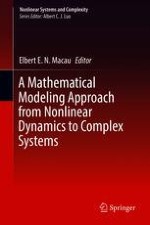2019 | OriginalPaper | Buchkapitel
10. Network Centrality: An Introduction
verfasst von : Francisco Aparecido Rodrigues
Erschienen in: A Mathematical Modeling Approach from Nonlinear Dynamics to Complex Systems
Aktivieren Sie unsere intelligente Suche, um passende Fachinhalte oder Patente zu finden.
Wählen Sie Textabschnitte aus um mit Künstlicher Intelligenz passenden Patente zu finden. powered by
Markieren Sie Textabschnitte, um KI-gestützt weitere passende Inhalte zu finden. powered by
